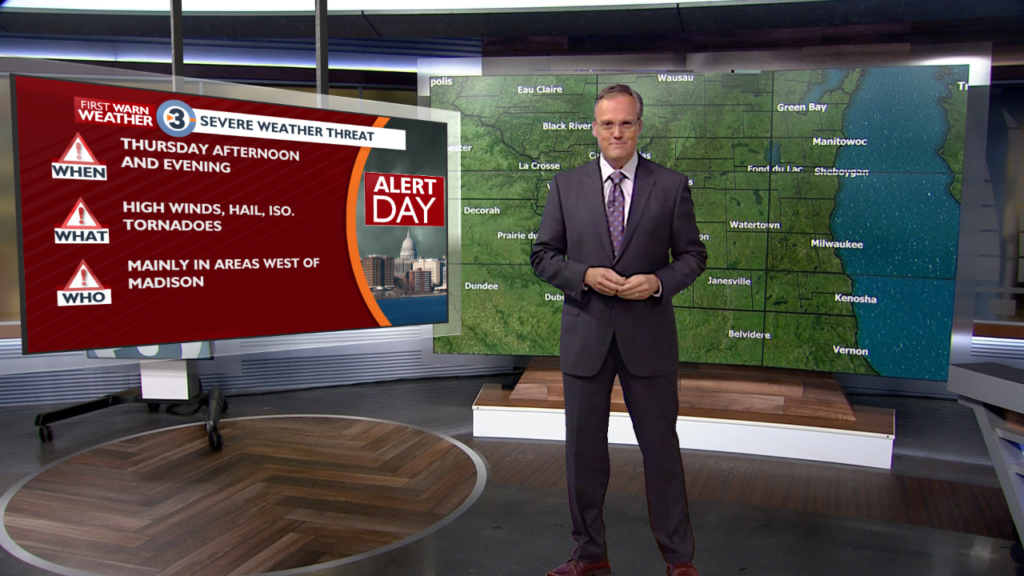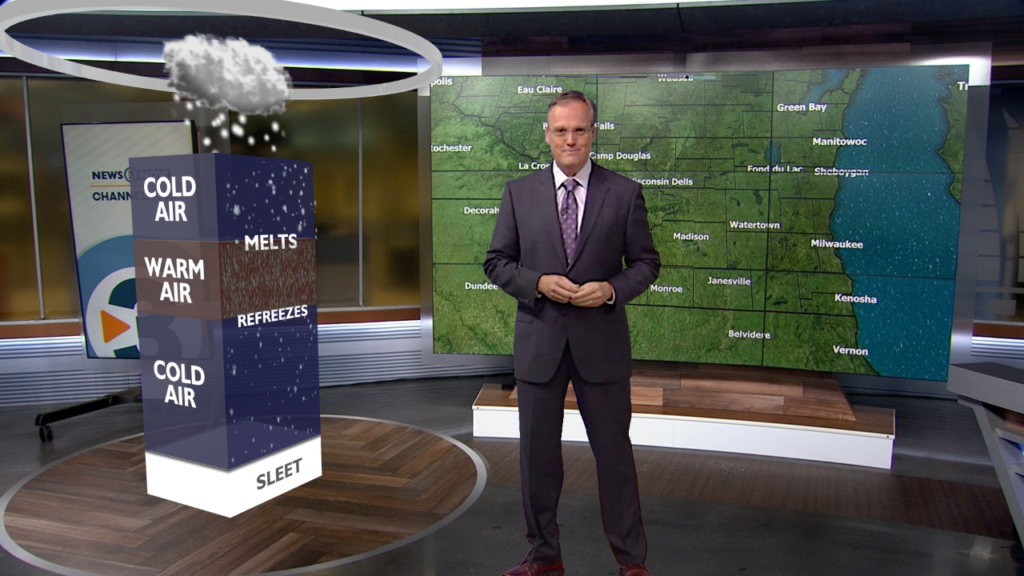Augmenting weather presentations with value-added content

Consumers think the weather coverage on TV is essentially the same on every channel. According to new research conducted for The Weather Company, an IBM Business. Flip between different channels, and you’ll see what viewers see: endless satellite and radar loops and a series of rainbow-colored maps covered with numbers. Except for the banner at the top and the meteorologist standing in front of the graphics, most weather presentations look very similar.
Augmented reality software can help change that perception. The unique 3D weather graphics are anything but ordinary and offer broadcast meteorologists an opportunity to differentiate their weather coverage from the competition (which includes weather apps.)
Tell me more
Max Reality, the proprietary software developed by The Weather Company, can create full-size weather explainers that fill the studio with realistic clouds, raindrops, flashes of lightning, and the sound of thunder. Walls can appear to open to the outside, allowing blowing snow or flood water to flow across the news set to illustrate the potential for impactful weather. Cars, school buses, and tractors can skid across the floor to emphasize slick driving conditions. And so much more.
READ MORE: 5 COMMON MAX REALITY MISTAKES
These dramatic, immersive scenes can significantly enhance a weather presentation, but they take a lot of time to create and execute. Not all augmented reality scenes need to be that extravagant. Simpler scenes can be equally engaging. Broadcast meteorologists can use augmented reality to add valuable information to an otherwise ordinary weather graphic.
For example, the scene I created below for one of my coaching clients is designed to be used with radar in the video wall. After tracking the movement of storms across the area, the augmented reality panel drops down from the ceiling, and the broadcast meteorologist can explain the possibility of the storms becoming severe. The weather team could use the same augmented reality content with the convective outlook or future radar data in the video wall.

Think of it as showing two different graphics simultaneously: one provides general weather information while the other, created in augmented reality, provides specific details. A map showing estimated rainfall accumulation could be enhanced with a list of specific rainfall totals. A tornado watch graphic could be coupled with severe weather safety tips. The daily almanac becomes more meaningful when accompanied by a graph showing the rise and fall of hourly temperatures.
Tell me why
The Weather Company’s research also revealed why consumers are turned off by weather presentations on television. Respondents to the nationwide survey said meteorologists don’t explain why the weather changes, and it’s often confusing when they do. Max Reality can also help with that.
In another scene, I customized content downloaded from The Weather Community website that shows how wintery precipitation forms. My clients can use this scene with precipitation-type radar in the video wall. While pointing out specific locations on the map that are getting freezing rain, sleet, or snow, augmented reality reveals the atmospheric profile producing each type of precipitation.

The same augmented reality elements could also be used to record a video for the station-branded website and weather app. Timeless digital content like this can play all winter long.
More than eye-candy
Max Reality can produce unique, stunning weather content, but it must be more than that. Using technology for the sake of showing off the technology doesn’t serve the consumer. And they can tell when you’re just showing off. Don’t waste your viewers’ time.
To be effective, augmented reality content should inform, educate, and delight the viewer. It’s one thing for broadcast meteorologists to verbally explain where freezing rain, sleet, and snow are falling. It’s another thing to show viewers why different types of precipitation are falling in different locations using realistic raindrops and snowflakes. That’s value-added information they can’t get from the competition.
Tim Heller is an AMS Certified Broadcast Meteorologist, Talent Coach, and Weather Content Consultant. He helps local TV stations and broadcast meteorologists communicate more effectively on-air, online, and on social media.
